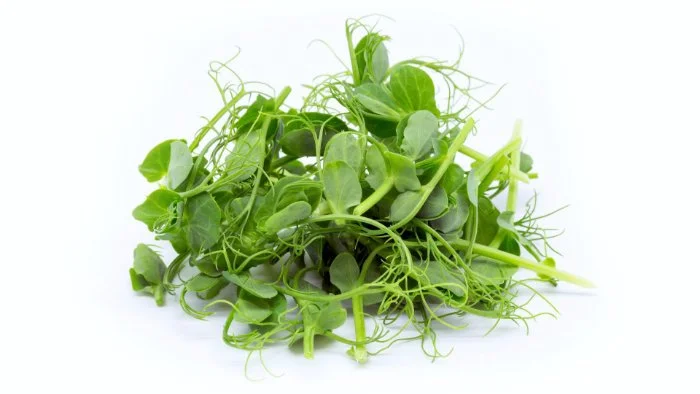Hydroponic Microgreens: Everything You Need to Know
Microgreens are young vegetable greens collected just after their first true leaves appear. They are smaller than baby greens but more developed than sprouts. Sprouts grow in plain water and are eaten whole, while microgreens grow in soil or hydroponic systems and are cut at the stem.
These tiny greens are popular in home gardens, restaurants, and health-focused diets. They add bold flavors and nutrients to salads, sandwiches, and smoothies. Since they grow quickly and take up little space, they’re a favorite for indoor gardening.
Hydroponic and greenhouse-grown produce offer fresh, pesticide-free microgreens all year. Unlike traditional farming, these controlled environments protect plants from pests and harsh weather. Vertical farming also makes growing microgreens more sustainable by using less space and water.
How to Grow Microgreens
Microgreens grow fast and don’t need much space. You can grow them in soil or with hydroponic systems. Soil is natural and easy to use, but hydroponic produce grows cleaner and faster.
Microgreens need plenty of light and good airflow to grow well. They do best at temperatures between 65-75°F. Too much moisture can cause mold, so keep humidity low.
Picking the right microgreen seeds is important. Some of the best options are broccoli, radish, pea shoots, and sunflower. Always buy top-quality seeds for the best results. Hydroponic technology helps growers control conditions and produce fresh microgreens all year.
Microgreens Nutrition and Health
Microgreens are packed with nutrients. Studies show they can have up to 40 times more vitamins and minerals than fully grown plants. This makes them a great way to add extra nutrition to any meal.
Eating microgreens may support heart health, improve digestion, and boost the immune system. Their high levels of antioxidants help protect the body from damage and inflammation.
Some of the best microgreens to eat include broccoli, kale, radish, and pea shoots. These varieties are rich in vitamins like C, K, and E, along with important minerals such as iron and potassium. Adding microgreens to your everyday diet is an easy way to improve your overall health.
How to Use Microgreens
Microgreens add fresh flavor and nutrition to many dishes. They make a great topping for salads, sandwiches, and soups. Chefs also use them in gourmet meals to enhance color and taste.
These tiny greens work well in smoothies and juices, too. They boost vitamins and add a mild, fresh flavor without overpowering other ingredients.
To keep microgreens fresh longer, store them in a dry container in the fridge. Avoid washing them until you're ready to eat them, as moisture can cause them to spoil faster.
Here are a few of our favorite microgreens recipes to help you get started:
Eden Green is Your Partner in Growing
Eden Green’s greenhouse-grown microgreens offer consistent quality and freshness. By using controlled environments, we grow vibrant, nutrient-rich greens year-round.
Our hydroponic technology eliminates the need for pesticides. Our greenhouses are a cleaner and more sustainable way to grow food. This method also uses less water and space compared to traditional farming.
For retailers and food service providers, we offer private label and bulk solutions. Our label service allows brands to customize packaging. Meanwhile, custom processing ensures that microgreens are delivered fresh and ready to use.
FAQs About Microgreens
What are microgreens?
Microgreens are young vegetable greens harvested just after their first true leaves develop. They are smaller than baby greens but more mature than sprouts. Packed with flavor and nutrients, they come in many varieties, including broccoli, kale, radish, and pea shoots.
What is so special about microgreens?
Microgreens’ benefits are many. Their vitamin and mineral content can be up to 40 times higher than that of mature plants. They are easy to grow, need little space, and can enhance meals with fresh flavors and vibrant colors. Their high nutrient content makes them popular in both home kitchens and restaurants.
Is it okay to eat microgreens every day?
Yes! Microgreens are safe to eat daily and can help boost your intake of essential nutrients. They provide vitamins such as C, E, and K, along with important minerals. Just be sure to store them properly and wash them before eating.
What is the healthiest microgreen?
Broccoli microgreens are among the healthiest. They contain sulforaphane, a compound linked to anti-inflammatory and cancer-fighting benefits. Other great choices include kale for vitamin K, radish for antioxidants, and pea shoots for fiber and protein.
What is a possible downside to microgreens?
Microgreens have a short shelf life and can spoil quickly if not stored properly. To keep them fresh, refrigerate them in a dry container and wash them only before use. It’s also important to source them from a trusted supplier or grow them yourself for the best quality.






